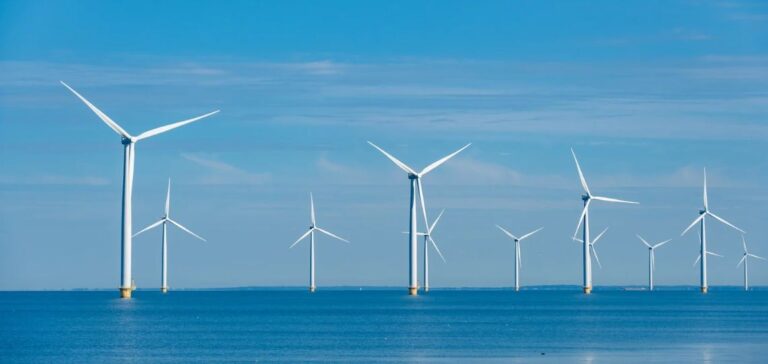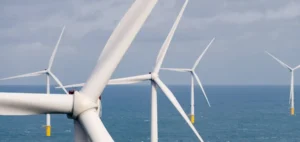The Inch Cape offshore wind project, located 15 kilometers off the Angus coast in the North Sea, has officially reached financial close. This milestone marks a significant step forward for the 1,080-megawatt (MW) wind farm, a key infrastructure for the UK’s energy transition. ESB and Red Rock Renewables, equal joint owners, secured over £3.5 billion in funding from a consortium of 22 commercial banks to support this critical phase.
The wind farm will be equipped with 72 Vestas 15 MW turbines, the first of their kind in the UK. These advanced turbines will be installed on a mix of monopile and jacket foundations. An offshore substation platform and two 85-kilometer alternating current (AC) export cables will transmit the electricity to an onshore substation currently under construction in Cockenzie, East Lothian.
A Major Contribution to Local Energy and Economy
Once operational, the wind farm is expected to generate nearly 5 terawatt-hours (TWh) per year, enough to power hundreds of thousands of UK households with clean electricity. The project has also made a significant economic impact, with £300 million already spent with more than 300 UK-based companies, ranging from technical consultancies to civil engineers.
The infrastructure aims to enhance the UK’s energy security while contributing to emissions reduction goals. Paul Lennon, Head of Offshore Wind, Hydrogen, and Long-Term Storage at ESB, highlighted this achievement as a major step in the company’s Net Zero 2040 strategy.
State-of-the-Art Technology for an Ambitious Project
This wind farm represents one of Scotland’s largest renewable energy initiatives. Xiaomeng Chen, CEO of Red Rock Renewables, emphasized that the project incorporates cutting-edge technologies and innovative designs, positioning it as a flagship example of large-scale green investment in Scotland.
The project benefits from a 50-year lease granted by Crown Estate Scotland and 15-year contracts with the Low Carbon Contracts Company (LCCC), awarded during the UK government’s Contract for Difference (CfD) auctions in 2022 and 2024.
Construction Timeline and Outlook
Construction of the onshore substation and coastal infrastructure has already commenced in Cockenzie, while the offshore platform and its foundations are nearing completion in Wallsend. Offshore construction is set to begin in Q2 2025 with the installation of export cables and the platform. First electricity production is expected in late 2026, with commercial operations scheduled to start in 2027.






















